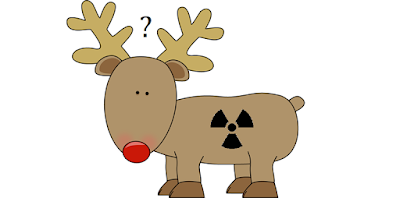I was doing a summer internship at the Finnish
Radiation and Nuclear Safety Authority a few years back, where I got the opportunity to try my hand at writing. It was very interesting work and the internship went by reaaally fast.
Oh, and I was also in charge of monitoring the radiation levels in the air of northern Finland, while my supervisors were on summer vacation (yay). Thankfully, the radiation stayed at safe levels throughout the summer, although it would have been interesting to see what happens when they are elevated.
I did get to see some action as well, since we hosted a drill with other authorities, the emergency services and the military. The setting was that there was an unknown source of radioactivity spotted in Northern Finland and fighter jets were sent to collect samples from the clouds. Our job was to determine what the cause was and what needs to be done to avoid further damages.
It was partly exciting and partly dull, since I was assigned to spectate and just take notes and write time stamps for the final report.
Anyway, the idea of the article was to measure the amount of the Fukushima fallout in Finland and to determine how the radioactive matter transfers in nature. Spoiler alert: Fukushima radiation was barely noticeable, Finnish people got more radiation from eating
bananas.
The transfer is in principle quite simple: first the radioactive matter comes into contact with soil, from where it is absorbed by plants, which are eaten by animals and those animals are eaten by other animals and so on. This transfer is mathematically quantified with the use of transfer factors, but I will not go into details.
Some plants are very efficient at taking in the radioactive matter, like most species of lichen. There are also large differences in how the different lichens hold on to the radioactive matter: ground lichen stays radioactive for years, whereas beard lichen spews it out more than ten times faster than its ground bound cousin.
The interesting thing in this kind of transfer chain is that the radioactive matter is concentrated into the apex predator in the ecosystem. In some cases the apex predator is wolf or bear, and in others it is human. In fact, one of the most efficient concentration chains is the lichen-reindeer-human chain, and the Chernobyl disaster in 1986 almost ended reindeer herding in Lapland for good!
After the disaster, Finnish authorities measured the activity levels in reindeer and herders periodically. They found that even the herders themselves were quite radioactive (much more so than bananas). Now that a few decades has passed, the activity has dropped through decay so much that we don't need to worry about people getting radiation poisoning from reindeer anymore.



Comments
Post a Comment